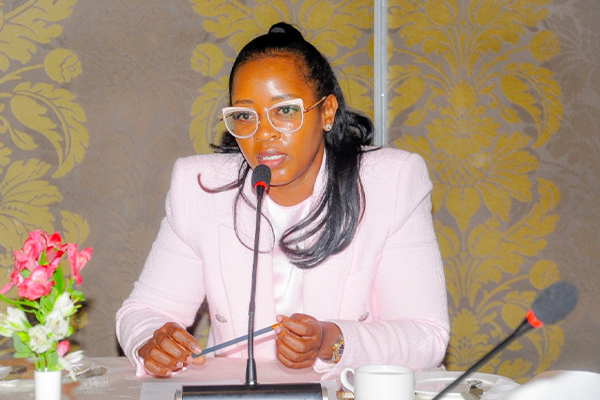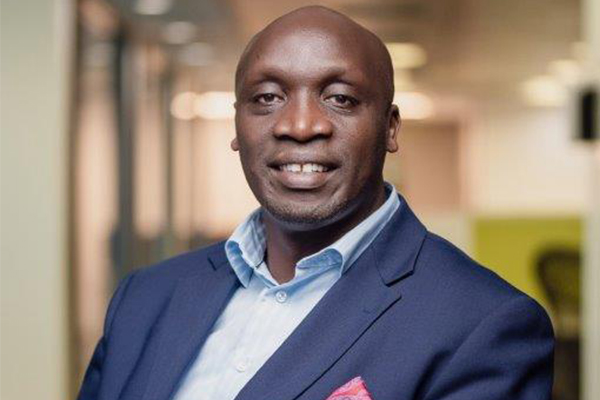By Catherine Kyobutungi, Executive Director, African Population and Health Research Center
With the arrival of vaccines in the country, Kenya is set to begin its Covid-19 vaccination roll-out. Catherine Kyobutungi, Executive Director of the African Population and Health Research Center, provides some insights into the country’s Covid-19 vaccine strategy and the inclusion of private companies in vaccination programmes.
What’s the rollout plan?
The first vaccines to arrive were sent through the Covid-19 Vaccines Global Access facility – COVAX. Kenya is set to receive 24 million doses through the facility.
The country’s strategy is a comprehensive one that goes up to June 2023, by which time it expects to have received about 49 million doses, covering 30% of the population. The current vaccination plan only covers 30% of the population as this is what the government has been able to secure. Once more doses and funds become available, they will expand the target.

Healthcare workers in 47 counties are among those who will get the jab first. Frontline workers, including security personnel and teachers, are also on the priority list.
This is just one, albeit crucial, part of Kenya’s elaborate vaccine rollout plan that’s to be implemented by various bodies including the National Immunisation Interagency Coordinating Committee, the Kenya National Immunisation Technical Advisory Group and the National Vaccine Safety Advisory Committee.
The vaccination strategy covers nine areas:
Regulatory preparedness
Covid-19 vaccines already approved by stringent regulatory authorities elsewhere will be expedited for approval in Kenya within seven days of a manufacturing company, or their agent, submitting an application.
Planning and coordination
This will be done under the Ministry of Health with support from the National Covid-19 Vaccine Deployment and Vaccination Steering Committee, National Covid-19 Deployment and Vaccination Task Force and similar bodies at county level.
Funding
There’ll be a mix for both the vaccine and the rollout. Gavi – a global vaccine organisation – through the COVAX facility will cover 20% of the population and domestic funds will cover 10%.
Target populations and vaccination strategies
Vaccine rollout will be done in three phases. The first involves 1.25 million people and runs between now and June 2021. Phase two will run between July 2021 and June 2022, targeting the most vulnerable, including the elderly and those above 18 years with comorbidities. It targets 9.76 million people. Phase three focuses on other vulnerable groups of people of 18 years and above in congregations, hospitality and the tourism industry. The phase will run between July 2022 and June 2023. It targets 4.9 million people.

All the phases are based on vaccine availability, storage requirements and administration sites that can reach prioritised populations. In phase one, as much as possible will be done through hospitals.
Supply chain management
Phase one will rely on existing infrastructure. There’s a plan to increase capacity for negative temperature storage vaccines in phase two and beyond. A detailed mapping of vaccine storage facilities, or regional depots, and vaccination sites across the country has been done.
Human resources management and training
The plan is to use existing healthcare workers in public and private facilities with no new recruitments. There’s planned training – virtual and face to face – on Covid-19 vaccines and side effects targeted at staff in hospitals in the first phase and expanded to other staff in subsequent phases. Training guides based on generic World Health Organisation (WHO) training modules already exist.
Acceptance and uptake
A communication strategy is being developed and will be implemented before rollout.
Safety monitoring
Following the deployment of vaccines, there’ll be safety monitoring and programmes to identify any adverse events. These programmes build on existing systems and processes for reporting adverse effects of vaccines in the country.
Monitoring and evaluation system
This will be introduced before the rollout begins. It will be developed to take into account new COVID-19 vaccine approvals as they happen.
What vaccines have been procured?
At the time of developing the plan, only three vaccines had been authorised for use by the WHO. These are the Pfizer BioNTech, Moderna, and the Oxford/AstraZeneca. Since then, other vaccines have been authorised by stringent regulatory authorities elsewhere. This means that their approval for use in Kenya will eventually be expedited.
Kenya’s first rollout, of about one million doses, will be of the AstraZeneca-Oxford vaccine.
What’s the role of private companies?
It will be a while before private companies can import enough vaccines independent of the government. This is because the global supply is still limited. This means that it’s difficult to find enough uncommitted doses to buy, for instance, outside the COVAX facility. This may change as more vaccines are approved and manufacturing bottlenecks are resolved.
Involving private healthcare providers in national vaccination programs is not unusual. Private facilities have been recognised as critical to the attainment of the goals of the Global Vaccine Action Plan, a framework to prevent millions of deaths by 2020. Indeed, successful implementation and reaching the goals of this plan, and necessary improvements in vaccine coverage rates, require the best possible interaction between public and private (for profit and not-for-profit) healthcare sectors.
The private sector has an important role in Kenya’s health services. For instance, a 2010 study showed that 50% of outpatient visits and 70% of inpatient services were in public health facilities. This means private facilities contribute significantly to healthcare provision.
It is therefore common for routine vaccination to be done in private facilities on behalf of, and with support from, the government. For example, the rollout of the human papillomavirus (HPV) vaccine in Kenya is currently being done in public and private facilities.
What are the advantages of allowing this?
In areas where the coverage of public facilities is low, private facilities may be the only option.
Also, the Covid-19 vaccination program will be unprecedented in scale and so government needs all the help it can get. The government will need to be creative in establishing easily accessible vaccination points so people do not have to go out their way to get a shot. In addition, once the vaccine becomes widely available, government may rely on the cold chain and supply chain infrastructure of private facilities to ensure that vaccines reach every corner of the country as fast as possible.
What are the drawbacks and challenges?
A balance needs to be struck between access and equity. The goal of the Covid-19 vaccination program should be to vaccinate as many people as possible, and as fast as possible. The private sector can contribute to this goal by improving physical access while ensuring financial access. The government has to negotiate with the private sector based on clearly defined roles and expectations, especially around the cost of the shot. These have to be communicated to the general public so that people seek services knowing what to expect.
It would be a shame for people to fail to access the vaccine in public facilities because of distance and inconvenience, and fail to access the same in private facilities because of cost.
This article was originally published on The Conversation on March 23, 2021.
















